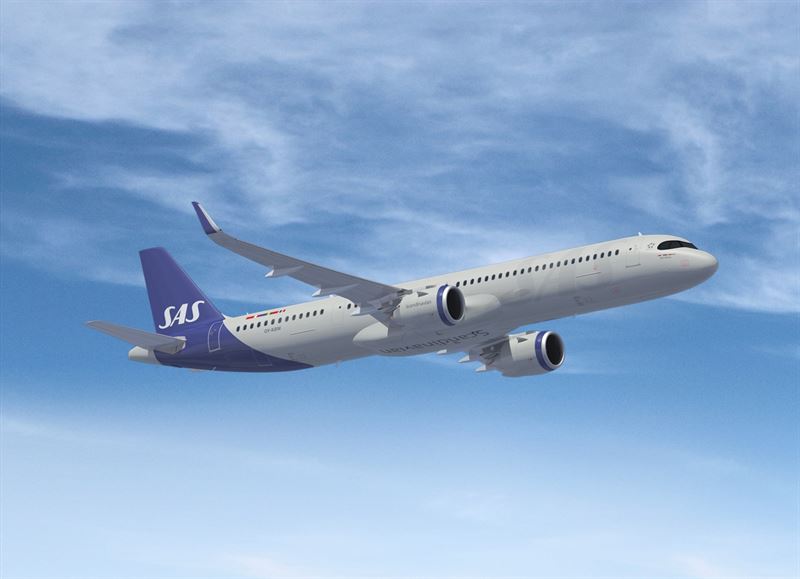First new A321LR to enter SAS fleet

The first of three new A321LRs, a narrow-bodied aircraft suited for longer distances, will enter service in the SAS fleet on September 18, 2020. The new aircraft is equipped with a service concept with three travel classes, like the rest of SAS’ long-haul fleet, and will increase SAS’ flexibility to meet Scandinavian travel patterns. The new aircraft, part of SAS’ ongoing fleet renewal will reduce climate-impacting emissions in comparison to previous generations of similar aircraft.
The Airbus A321LR is a narrow-body, single aisle aircraft, specially configured to fly longer distances than a standard A321neo. The smaller aircraft gives SAS the opportunity to fill the aircraft on new routes and will be a welcome addition to the SAS long haul fleet. The A321LR will increase the SAS’ flexibility to adjust to changes in the demand for new routes and destinations.
“This is an entirely new aircraft type for SAS, which is incredibly well suited to the Scandinavian market and emerging travel patterns to and from the region. It gives SAS an opportunity to offer travelers more intercontinental routes, fewer stopovers and shorter travel times to and from Scandinavia. The new aircraft is equipped with a service concept at par with the rest of SAS’ long-haul fleet, offering passengers all the benefits, level of comfort and choices of our traveling classes,” says Karl Sandlund, EVP & Chief Commercial Officer.
The A321LR is part of the latest generation of aircraft and is expected to reduce climate-impacting emissions by around the same amount as when SAS introduced the A320neo, whose carbon footprint is approximately 15-18 percent smaller than an equivalent size aircraft from the previous generation.
“Reducing the carbon footprint in the airline industry is crucial and SAS aims to lead the way toward sustainable travel. We have set a target of reducing carbon dioxide emissions by 25 percent by 2030. The ongoing fleet renewal, including new long-haul aircraft, is an investment toward more sustainable aviation,” continues Sandlund.
The aircraft has 22 Business, 12 Plus and 123 Go, meaning a total of 157 seats in a single aisle aircraft. The seats are especially chosen for the A321LR to optimize the comfort in all three travel classes to meet the expectations of frequent travelers. Seats in SAS Business are fully flat seat beds and there are different mood light scenarios in the cabins, as well as Hi-speed Wi-Fi. Every seat is equipped with IFE screens, PC-power and/or Hi-power USB. The reduced noise level inside the cabin will further enhance the travel experience onboard.
The first A321LR will enter service on September 18, 2020. The first route the A321LR will operate on be Copenhagen-Boston. This means that the route will become a year-round destination served on a high frequency basis and will further strengthen SAS’ offering to the North Americas. Sales will start on November 20, 2019.
New routes will gradually be communicated later in 2020. The aircraft has enough range to reach northeast US, but it can also reach destinations in Canada, the Middle East and India from Scandinavia.
For more information, please contact:
SAS Press Office, phn +46 8 797 2944
SAS, Scandinavia's leading airline, flies over 30 million passengers to, from and within Scandinavia each year. The airline has three main hubs – Copenhagen, Oslo and Stockholm – with 125 destinations in Europe, USA and Asia. Supported by its Scandinavian Cultural Heritage and sustainable values, SAS is striving it reduce its total carbon dioxide emissions by 25 percent and operate with biofuels corresponding to the total consumption of aviation fuel used in all SAS domestic flights, by the year 2030.
In addition to flight operations, SAS offers ground handling services, technical maintenance and air cargo services. SAS is a founder member of the Star Alliance™, and together with its partner airlines offers around 19,000 daily flights to over 1,300 destinations worldwide.



